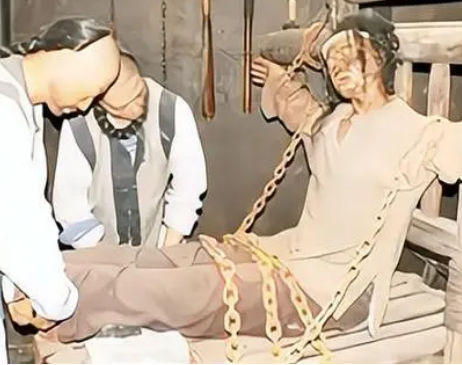In the long history of ancient China, punishment, as a means of maintaining social order, was often cruel and relentless. Among them, the excision of the heart was considered one of the most barbaric punishments in ancient China, which not only caused extreme harm to the prisoner's body but also extremely destroyed their spirit.

The excision of the heart, as the name suggests, refers to the punishment of removing the prisoner's heart from their body. This punishment was regarded as a great humiliation and punishment to the prisoner in ancient times. According to historical records, this punishment was mostly used to deal with major crimes such as treason and rebellion. During the execution, the prisoner was fixed on a specific instrument of torture, and then the executioner used a sharp instrument to cut open their chest and directly remove the heart. The cruelty of this punishment can be imagined.
However, the excision of the heart was not universally present throughout ancient Chinese society. In fact, with the development of society and the progress of civilization, many originally barbaric punishments were gradually abolished or improved. After the Tang Dynasty, the excision of the heart rarely appeared, and more humane forms of punishment took its place.
In addition to the excision of the heart, there were other cruel punishments in ancient China, such as the dismemberment and Lingchi. These punishments also reflected the severe attitude towards criminals and the imperfect legal system at that time. However, with the advancement of history and the development of human civilization, these cruel punishments were gradually eliminated, and more reasonable and humane legal systems took their place.
Looking back on the history of ancient Chinese punishments, we can see that although the punishment methods at that time were cruel and relentless, they were also products of history, reflecting the social values and legal systems at that time. Through the understanding and research of this period of history, we can better understand history and provide reference and inspiration for the legal construction of modern society.
Nowadays, with the popularization of the rule of law and the strengthening of human rights protection, we should cherish the current legal environment, actively participate in social governance, and jointly maintain a harmonious and stable social situation. At the same time, we should also remember history, learn from history, and strive to build a more fair and civilized social environment.
In conclusion, although the excision of the heart, as one of the top ten cruelties in ancient China, has become a part of history, it still reminds us that we have a long way to go on the road of legal construction and social development. Let us work together to create a better future.
Disclaimer: The above content is sourced from the internet and the copyright belongs to the original author. If there is any infringement of your original copyright, please inform us and we will delete the relevant content as soon as possible.
































